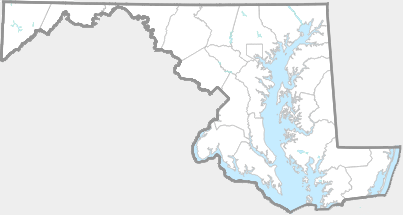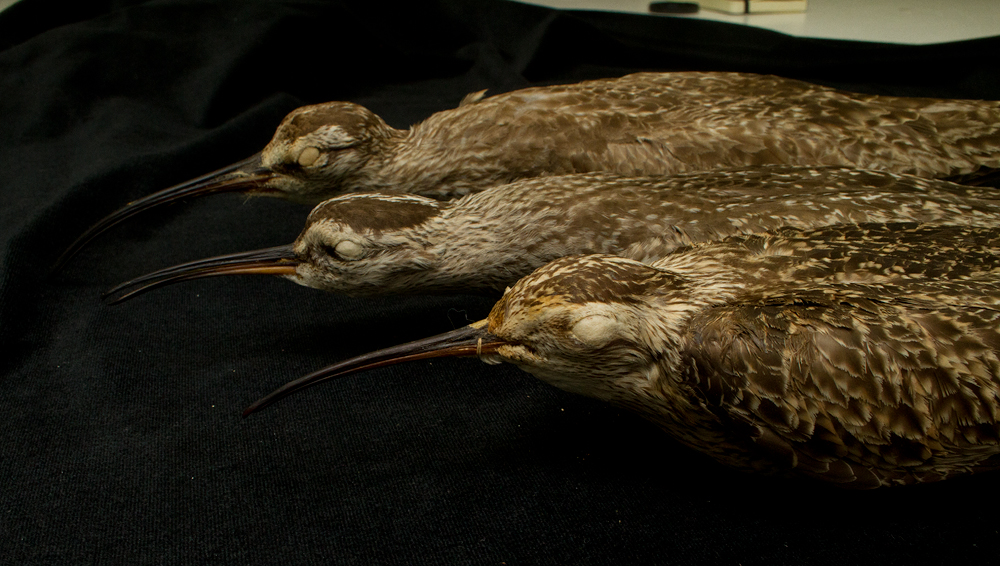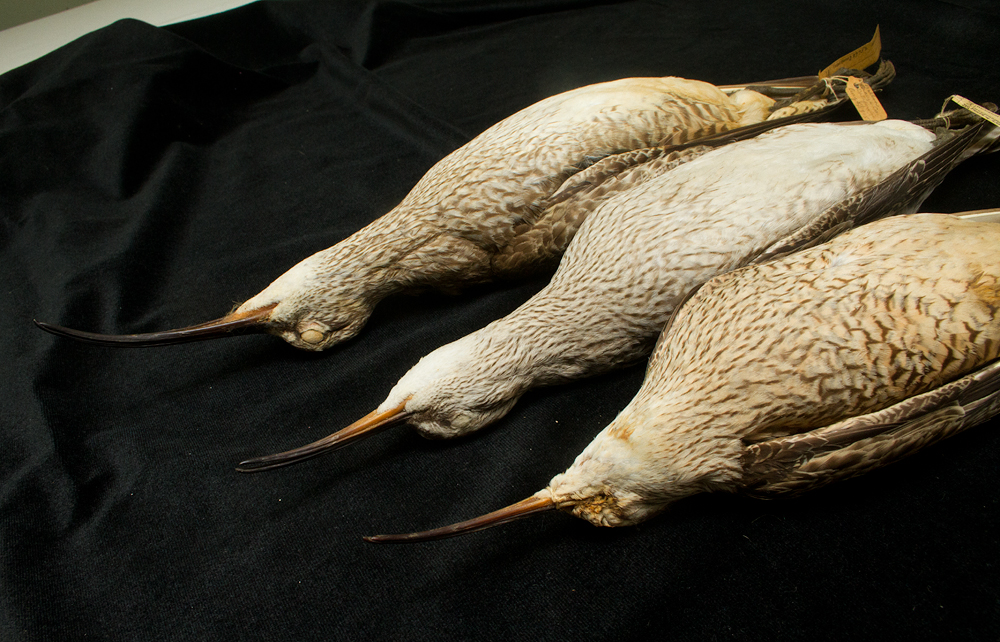|
| GA | AL | WA | FR | CL | MO | HO | BA | BC | HA | CE | PG | AA | CV | CH | SM | KE | QA | CN | TA | DO | WI | SO | WO |
An Eskimo Curlew specimen at the Smithsonian Institution, Division of Birds in Washington, D.C. (4/13/2013). Eskimo Curlew was a fall visitor to Maryland en route to its wintering grounds in South America, but its population was decimated by market hunters, habitat loss on its wintering grounds, and the extinction of a primary spring food source - all caused by human short-sightedness. It is now almost certainly extinct, but some optimists maintain hope. Photo by
Bill Hubick. (
MBP list)
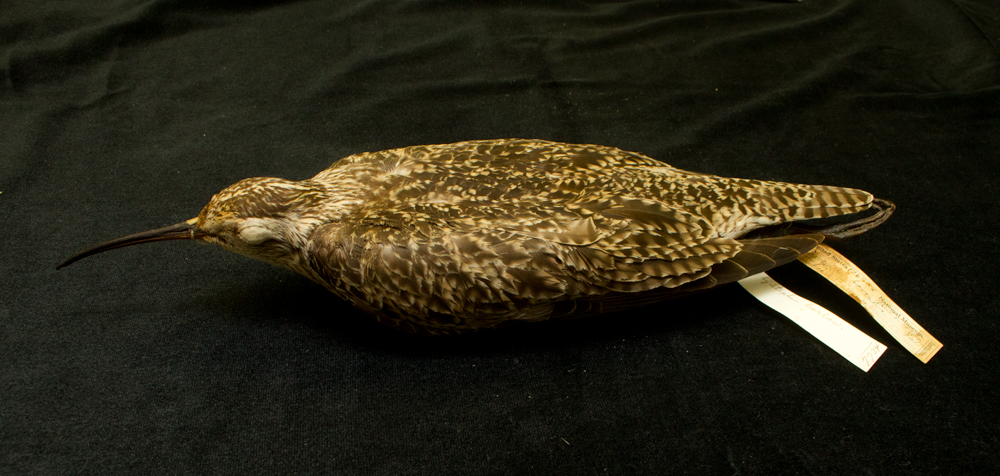
An Eskimo Curlew specimen at the Smithsonian Institution, Division of Birds in Washington, D.C. (4/13/2013). Kaufman (1996) stated, "A comparison of dates and migratory patterns has led some to conjecture that Eskimo Curlews and American Golden-Plover are the shorebirds that attracted the attention of Christopher Columbus to nearby land after 65 days at sea and out of sight of land on his first voyage. In the 1800s millions of Eskimo Curlews followed migration routes from the present Yukon and Northwest Territories, flying east along the northern shore of Canada, then south over the Atlantic Ocean to South America in the winter. When returning to North America, they would fly north through the Great Plains." Photo by
Bill Hubick. (
MBP list)
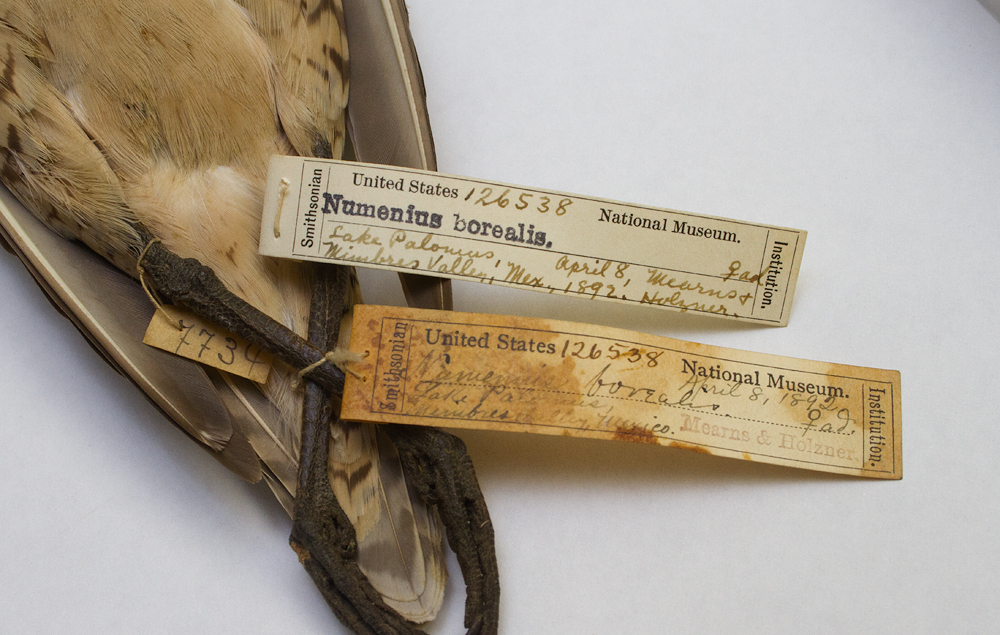
An Eskimo Curlew specimen at the Smithsonian Institution, Division of Birds in Washington, D.C. (4/13/2013). This individual was collected at Lake Palonius in Mexico on April 8, 1892. US Geological Survey (2013) notes: "The role that the Eskimo Curlew may have played in leading Europeans to the New World is narrated in part as follows: On October 7, 1492, 'immense flocks of birds, far more than they had seen before, passed overhead all day long, coming always from the north and heading always towards the southwest.' On this, his 65th day at sea, Columbus decided to change course and follow the birds. 'Columbus's journal tells us that some birds the sailors snared were plainly field birds that could not possibly find rest on the water.' 'Although the mariners did not know what the non-stop birds were, that statement, the date and direction of flight at that time and in that place identify them almost certainly as golden plovers and Eskimo curlews, the only birds [not so] having the speed and power to make the oversea flight of 2,500 miles or more from Labrador in the north to the region of the Orinoco River [in Venezuela]' (Tooke 1961). On 12 October Columbus landed on San Salvador (Island)." Photo by
Bill Hubick. (
MBP list)
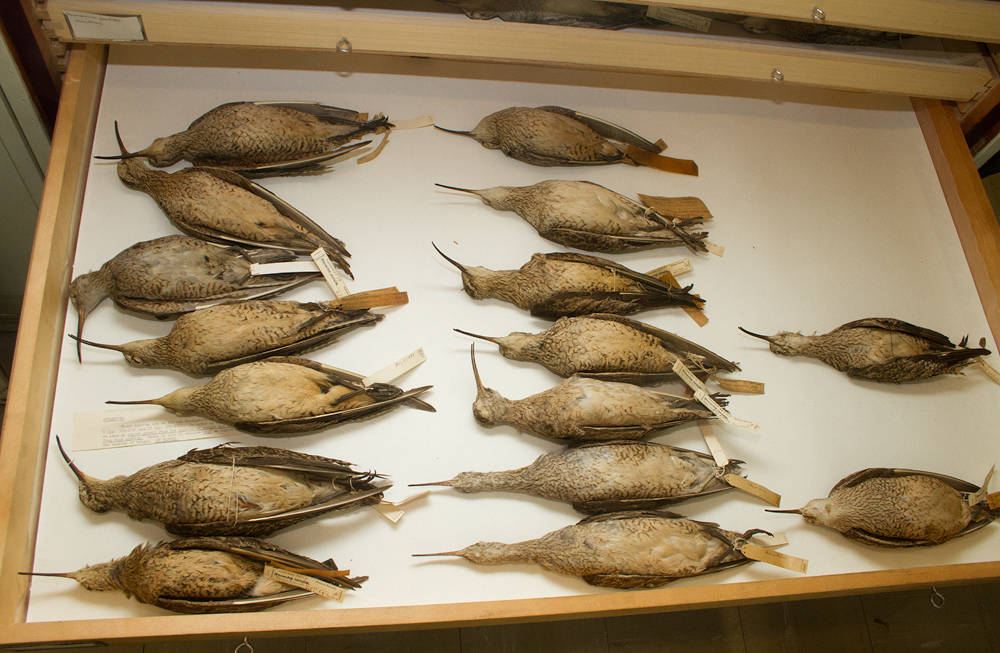
The 16 Eskimo Curlew specimens at the Smithsonian Institution, Division of Birds in Washington, D.C. (4/13/2013). Photo by
Bill Hubick. (
MBP list)
Eskimo Curlew (front) compared to immature Whimbrel (middle) and adult Whimbrel (back). Photographed at the Smithsonian Institution, Division of Birds in Washington, D.C. (4/13/2013). Photo by
Bill Hubick. (
MBP list)
Eskimo Curlew (front) compared to immature Whimbrel (middle) and adult Whimbrel (back). Photographed at the Smithsonian Institution, Division of Birds in Washington, D.C. (4/13/2013). Photo by
Bill Hubick. (
MBP list)
Eskimo Curlew (front) compared to immature Whimbrel (middle) and adult Whimbrel (back). Photographed at the Smithsonian Institution, Division of Birds in Washington, D.C. (4/13/2013). Photo by
Bill Hubick. (
MBP list)
Eskimo Curlew (front) compared to immature Whimbrel (middle) and adult Whimbrel (back). Photographed at the Smithsonian Institution, Division of Birds in Washington, D.C. (4/13/2013). Photo by
Bill Hubick. (
MBP list)
View All Images
Use of images featured on Maryland Biodiversity Project is only permitted with express permission of the photographer.


 Synonyms: ESCU.
Synonyms: ESCU.
